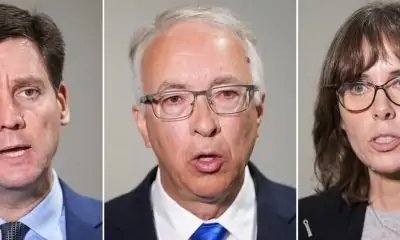“What’s the average price of a detached home?”
Real eState
Joanne Paulson: As Alberta draws people west, why aren’t Sask’s low real estate prices doing the same?
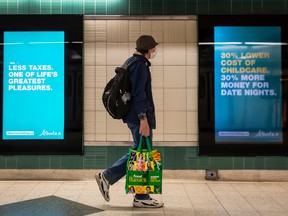
That’s the question the Government of Alberta asked Torontonians on one of its subway ads, in an attempt to lure Hogtown residents to Cowtown or E-Town.
My answer: Try Saskatoon and subtract a full million bucks. If, of course, you can find a house at all.
Before I get into that, here’s another Alberta ad, because I can’t resist twists on old jokes:
“An engineer, accountant and plumber walk into a province. They all get jobs.”
I have no idea whether this sort of thing brings results, but at least it IS an idea, one that just might attract innocent easterners to the west. Could it work for Saskatchewan?
Because we need more people. Our government regularly crows about our growing population, and in overall numbers, that’s true. But we are also losing people we can’t afford to say buh-bye to, and a bunch of them are headed for, yes, Alberta. As it has been and perhaps always will be.
One of the participants said, “We have a population problem. We have a density problem. We should be welcoming far more people to this province.”
Chris Guérette, CEO of the SRA, was in full agreement with this comment, and wondered why people are not moving here when our real estate prices are among the most affordable in Canada.
They are also the most stable, and stability is also an attractive quality.
As interest rates soar, prices are plummeting in most jurisdictions, and that’s scary. Not happening here. The province’s benchmark price rose three per cent year-over-year to $324,900 in October. Saskatoon set another record high benchmark price at $371,600, a 4.4 per cent increase. Regina was up 0.9 per cent to $317,800.
Even so, “Our prices didn’t decrease … at all,” she said. At least so far.
In fact, “Our prices continue to increase slightly … because we are different from the markets that overheated,” she said. Yet we remain the most affordable.
The story behind that stability, as I’ve babbled on about before, is largely low inventory. Even as sales in Saskatoon fell 12 per cent year-over-year, they remain above pre-pandemic levels. Meanwhile, inventory is down almost 33 per cent from the 10-year average.
Regina sales are up one per cent on the year, but up 26 per cent from the long-term average, while inventory is down 18 per cent.
“Throughout the province, we’re seeing not as many sales under the $500,000 mark because that’s where the inventory is lacking,” Guérette said.
So herein lies the conundrum. We have a remarkably stable housing market and economy, considering inflation and the state of, well, everything. We are overflowing with industries powering along. We need labour. It is, comparatively, affordable to live here.
This is not the Saskatchewan of yesteryear, when we were still trying to build a strong and diversified economy.
Yet we are not seeing substantial in-migration, even while there is a dearth of affordable single-family homes.
Where is the disconnect? Regarding inventory, it could be that the market is still catching its breath after two hot years of Covid-era buying. But does that explain a 33 per cent drop in houses for sale?
As to the in-migration issue, please don’t tell me it’s winter. Alberta’s winters are almost as gross as ours in recent years, and Manitoba’s are easily as bad. And have you ever witnessed a Newfoundland and Labrador snowstorm? Jobs and shelter are still more important than weather.
I would also find it hard to believe that potential new residents would not move here only because of a lack of housing selection.
Guérette and the housing industry are grappling with this odd state of affairs, hence convening a discussion on it. Meanwhile, she says, we need to embrace all newcomers with open arms.
“When they choose Saskatchewan, we need to say, ‘Yes. Where do you want to go? What do you need?’ ” she said.
In that vein, on the real estate development side, is it possible to change tracks from “If you build it, they will come” to “When they come, we’ll build it for them?”
In the interim, while struggling to figure this out, a clever advertising campaign extolling our many virtues may not be the worst idea ever. All other ideas welcome.
Joanne Paulson is a Saskatoon author and freelance journalist who has been covering real estate, off and on, for more than 25 years. Do you have a fascinating real estate story to share? Get in touch at jcpwriter@sasktel.net.
The news seems to be flying at us faster all the time. From COVID-19 updates to politics and crime and everything in between, it can be hard to keep up. With that in mind, the Saskatoon StarPhoenix has created an Afternoon Headlines newsletter that can be delivered daily to your inbox to help make sure you are up to date with the most vital news of the day. Click here to subscribe.
Real eState
Here are some facts about British Columbia’s housing market
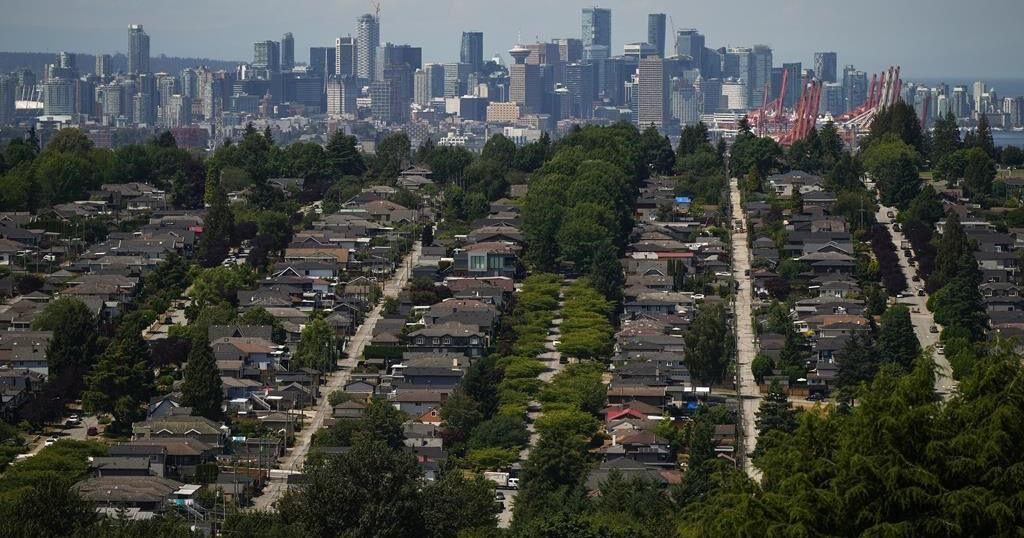
Housing affordability is a key issue in the provincial election campaign in British Columbia, particularly in major centres.
Here are some statistics about housing in B.C. from the Canada Mortgage and Housing Corporation’s 2024 Rental Market Report, issued in January, and the B.C. Real Estate Association’s August 2024 report.
Average residential home price in B.C.: $938,500
Average price in greater Vancouver (2024 year to date): $1,304,438
Average price in greater Victoria (2024 year to date): $979,103
Average price in the Okanagan (2024 year to date): $748,015
Average two-bedroom purpose-built rental in Vancouver: $2,181
Average two-bedroom purpose-built rental in Victoria: $1,839
Average two-bedroom purpose-built rental in Canada: $1,359
Rental vacancy rate in Vancouver: 0.9 per cent
How much more do new renters in Vancouver pay compared with renters who have occupied their home for at least a year: 27 per cent
This report by The Canadian Press was first published Oct. 17, 2024.
The Canadian Press. All rights reserved.
Real eState
B.C. voters face atmospheric river with heavy rain, high winds on election day
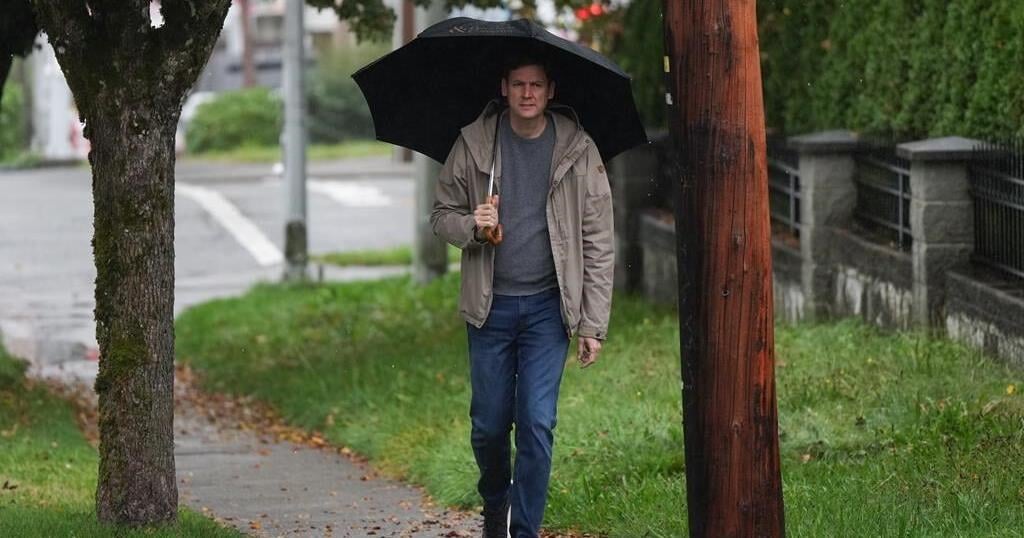
VANCOUVER – Voters along the south coast of British Columbia who have not cast their ballots yet will have to contend with heavy rain and high winds from an incoming atmospheric river weather system on election day.
Environment Canada says the weather system will bring prolonged heavy rain to Metro Vancouver, the Sunshine Coast, Fraser Valley, Howe Sound, Whistler and Vancouver Island starting Friday.
The agency says strong winds with gusts up to 80 kilometres an hour will also develop on Saturday — the day thousands are expected to go to the polls across B.C. — in parts of Vancouver Island and Metro Vancouver.
Wednesday was the last day for advance voting, which started on Oct. 10.
More than 180,000 voters cast their votes Wednesday — the most ever on an advance voting day in B.C., beating the record set just days earlier on Oct. 10 of more than 170,000 votes.
Environment Canada says voters in the area of the atmospheric river can expect around 70 millimetres of precipitation generally and up to 100 millimetres along the coastal mountains, while parts of Vancouver Island could see as much as 200 millimetres of rainfall for the weekend.
An atmospheric river system in November 2021 created severe flooding and landslides that at one point severed most rail links between Vancouver’s port and the rest of Canada while inundating communities in the Fraser Valley and B.C. Interior.
This report by The Canadian Press was first published Oct. 17, 2024.
The Canadian Press. All rights reserved.
News
No shortage when it comes to B.C. housing policies, as Eby, Rustad offer clear choice
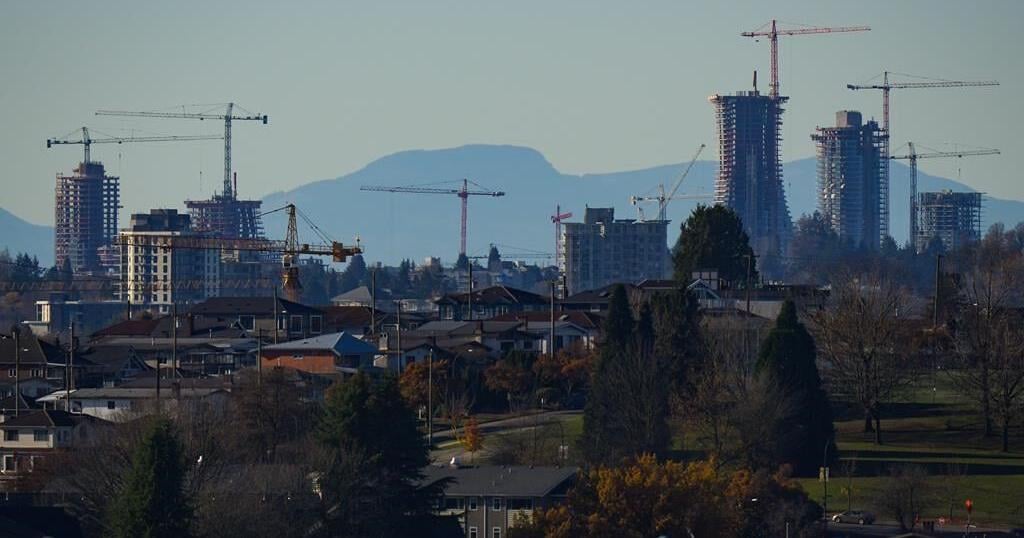
British Columbia voters face no shortage of policies when it comes to tackling the province’s housing woes in the run-up to Saturday’s election, with a clear choice for the next government’s approach.
David Eby’s New Democrats say the housing market on its own will not deliver the homes people need, while B.C. Conservative Leader John Rustad saysgovernment is part of the problem and B.C. needs to “unleash” the potential of the private sector.
But Andy Yan, director of the City Program at Simon Fraser University, said the “punchline” was that neither would have a hand in regulating interest rates, the “giant X-factor” in housing affordability.
“The one policy that controls it all just happens to be a policy that the province, whoever wins, has absolutely no control over,” said Yan, who made a name for himself scrutinizing B.C.’s chronic affordability problems.
Some metrics have shown those problems easing, with Eby pointing to what he said was a seven per cent drop in rent prices in Vancouver.
But Statistics Canada says 2021 census data shows that 25.5 per cent of B.C. households were paying at least 30 per cent of their income on shelter costs, the worst for any province or territory.
Yan said government had “access to a few levers” aimed at boosting housing affordability, and Eby has been pulling several.
Yet a host of other factors are at play, rates in particular, Yan said.
“This is what makes housing so frustrating, right? It takes time. It takes decades through which solutions and policies play out,” Yan said.
Rustad, meanwhile, is running on a “deregulation” platform.
He has pledged to scrap key NDP housing initiatives, including the speculation and vacancy tax, restrictions on short-term rentals,and legislation aimed at boosting small-scale density in single-family neighbourhoods.
Green Leader Sonia Furstenau, meanwhile, says “commodification” of housing by large investors is a major factor driving up costs, and her party would prioritize people most vulnerable in the housing market.
Yan said it was too soon to fully assess the impact of the NDP government’s housing measures, but there was a risk housing challenges could get worse if certain safeguards were removed, such as policies that preserve existing rental homes.
If interest rates were to drop, spurring a surge of redevelopment, Yan said the new homes with higher rents could wipe the older, cheaper units off the map.
“There is this element of change and redevelopment that needs to occur as a city grows, yet the loss of that stock is part of really, the ongoing challenges,” Yan said.
Given the external forces buffeting the housing market, Yan said the question before voters this month was more about “narrative” than numbers.
“Who do you believe will deliver a better tomorrow?”
Yan said the market has limits, and governments play an important role in providing safeguards for those most vulnerable.
The market “won’t by itself deal with their housing needs,” Yan said, especially given what he described as B.C.’s “30-year deficit of non-market housing.”
IS HOUSING THE ‘GOVERNMENT’S JOB’?
Craig Jones, associate director of the Housing Research Collaborative at the University of British Columbia, echoed Yan, saying people are in “housing distress” and in urgent need of help in the form of social or non-market housing.
“The amount of housing that it’s going to take through straight-up supply to arrive at affordability, it’s more than the system can actually produce,” he said.
Among the three leaders, Yan said it was Furstenau who had focused on the role of the “financialization” of housing, or large investors using housing for profit.
“It really squeezes renters,” he said of the trend. “It captures those units that would ordinarily become affordable and moves (them) into an investment product.”
The Greens’ platform includes a pledge to advocate for federal legislation banning the sale of residential units toreal estate investment trusts, known as REITs.
The party has also proposed a two per cent tax on homes valued at $3 million or higher, while committing $1.5 billion to build 26,000 non-market units each year.
Eby’s NDP government has enacted a suite of policies aimed at speeding up the development and availability of middle-income housing and affordable rentals.
They include the Rental Protection Fund, which Jones described as a “cutting-edge” policy. The $500-million fund enables non-profit organizations to purchase and manage existing rental buildings with the goal of preserving their affordability.
Another flagship NDP housing initiative, dubbed BC Builds, uses $2 billion in government financingto offer low-interest loans for the development of rental buildings on low-cost, underutilized land. Under the program, operators must offer at least 20 per cent of their units at 20 per cent below the market value.
Ravi Kahlon, the NDP candidate for Delta North who serves as Eby’s housing minister,said BC Builds was designed to navigate “huge headwinds” in housing development, including high interest rates, global inflation and the cost of land.
Boosting supply is one piece of the larger housing puzzle, Kahlon said in an interview before the start of the election campaign.
“We also need governments to invest and … come up with innovative programs to be able to get more affordability than the market can deliver,” he said.
The NDP is also pledging to help more middle-class, first-time buyers into the housing market with a plan to finance 40 per cent of the price on certain projects, with the money repayable as a loan and carrying an interest rate of 1.5 per cent. The government’s contribution would have to be repaid upon resale, plus 40 per cent of any increase in value.
The Canadian Press reached out several times requesting a housing-focused interview with Rustad or another Conservative representative, but received no followup.
At a press conference officially launching the Conservatives’ campaign, Rustad said Eby “seems to think that (housing) is government’s job.”
A key element of the Conservatives’ housing plans is a provincial tax exemption dubbed the “Rustad Rebate.” It would start in 2026 with residents able to deduct up to $1,500 per month for rent and mortgage costs, increasing to $3,000 in 2029.
Rustad also wants Ottawa to reintroduce a 1970s federal program that offered tax incentives to spur multi-unit residential building construction.
“It’s critical to bring that back and get the rental stock that we need built,” Rustad said of the so-called MURB program during the recent televised leaders’ debate.
Rustad also wants to axe B.C.’s speculation and vacancy tax, which Eby says has added 20,000 units to the long-term rental market, and repeal rules restricting short-term rentals on platforms such as Airbnb and Vrbo to an operator’s principal residence or one secondary suite.
“(First) of all it was foreigners, and then it was speculators, and then it was vacant properties, and then it was Airbnbs, instead of pointing at the real problem, which is government, and government is getting in the way,” Rustad said during the televised leaders’ debate.
Rustad has also promised to speed up approvals for rezoning and development applications, and to step in if a city fails to meet the six-month target.
Eby’s approach to clearing zoning and regulatory hurdles includes legislation passed last fall that requires municipalities with more than 5,000 residents to allow small-scale, multi-unit housing on lots previously zoned for single family homes.
The New Democrats have also recently announced a series of free, standardized building designs and a plan to fast-track prefabricated homes in the province.
A statement from B.C.’s Housing Ministry said more than 90 per cent of 188 local governments had adopted the New Democrats’ small-scale, multi-unit housing legislation as of last month, while 21 had received extensions allowing more time.
Rustad has pledged to repeal that law too, describing Eby’s approach as “authoritarian.”
The Greens are meanwhile pledging to spend $650 million in annual infrastructure funding for communities, increase subsidies for elderly renters, and bring in vacancy control measures to prevent landlords from drastically raising rents for new tenants.
Yan likened the Oct. 19 election to a “referendum about the course that David Eby has set” for housing, with Rustad “offering a completely different direction.”
Regardless of which party and leader emerges victorious, Yan said B.C.’s next government will be working against the clock, as well as cost pressures.
Yan said failing to deliver affordable homes for everyone, particularly people living on B.C. streets and young, working families, came at a cost to the whole province.
“It diminishes us as a society, but then also as an economy.”
This report by The Canadian Press was first published Oct. 17, 2024.
-

 News16 hours ago
News16 hours agoCanadanewsmedia news October 18, 2024: Testy B.C. election campaign reaches final day
-

 News16 hours ago
News16 hours agoUS to probe Tesla’s ‘Full Self-Driving’ system after pedestrian killed in low visibility conditions
-

 News16 hours ago
News16 hours agoAdvocates urge Ontario to change funding for breast prostheses, ostomy supplies
-

 News16 hours ago
News16 hours agoMore details expected on proposed deal that would see tobacco giants pay billions
-

 News16 hours ago
News16 hours ago‘Kindness’ influencers on TikTok give money to strangers. Why is that controversial?
-

 News16 hours ago
News16 hours agoHousing, health, and plastic straws: Here’s how B.C. politicians are wooing voters
-

 News16 hours ago
News16 hours agoTesty B.C. election campaign sees leaders attacking each other more than policy
-

 News16 hours ago
News16 hours agoRwanda shrugs off ‘sportswashing’ criticism in pursuit of a winning development formula
















